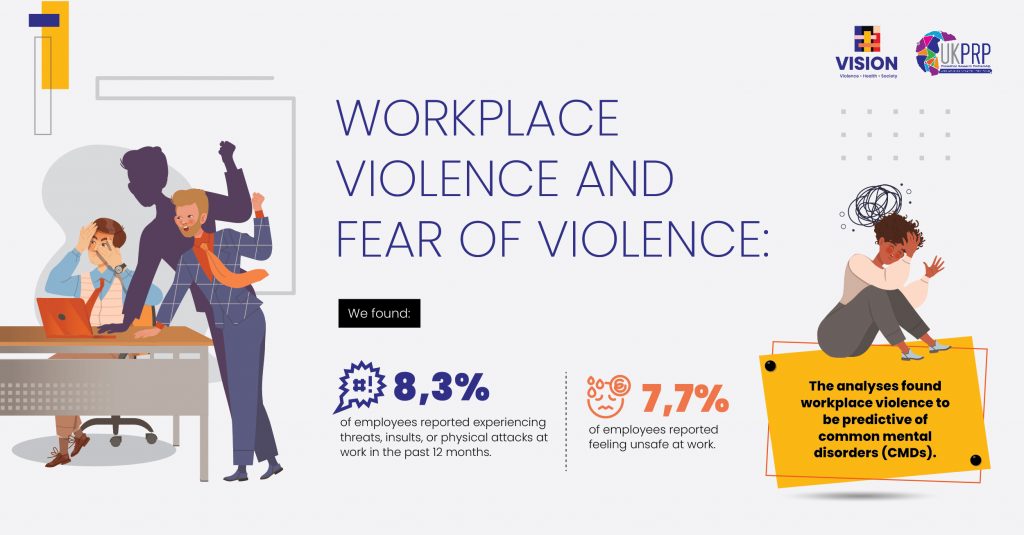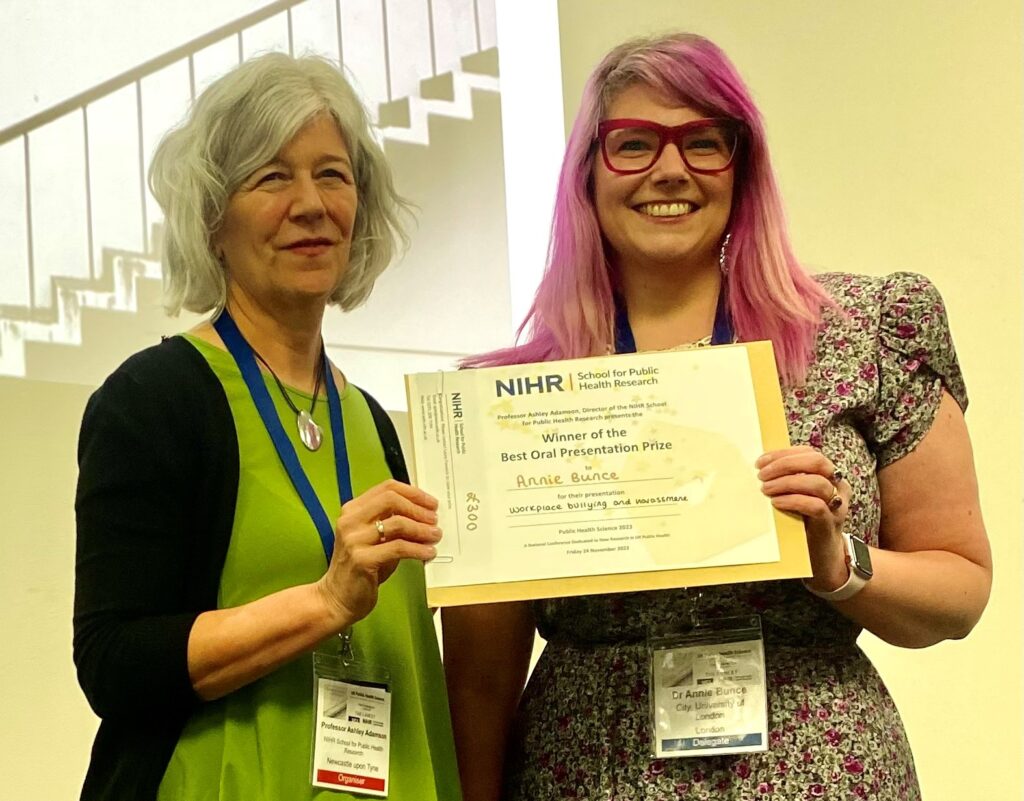Workplace bullying and harassment (WBH) is bad for people’s health, and this negative health impact can manifest in a variety of ways and be long-lasting.
Over a decade ago the UK government initiated the Fair Treatment at Work survey, aiming to ‘place the issue of bullying at work on employers’ agendas’, yet there has been no major initiative since.
Using data from the 2014 Adult Psychiatric Morbidity Survey, VISION researchers Annie Bunce, Ladan Hashemi and Sally McManus, along with Carrie Myers and Charlotte Clark from City St George’s, University of London and Stephen Stansfeld from Queen Mary, University of London, examined the prevalence and nature of WBH among workers in England, and associations with mental health.
A clear picture of the severity of the problem of WBH in England is painted by four key findings.
- One in ten people in paid work reported having experienced WBH in the past year. This is likely to be an underestimate due to underreporting for various reasons;
- Those who reported bullying were more likely to be in a financially disadvantaged position;
- Over half of people who reported having been bullied at work identified the perpetrator as a line manager; and
- Clinically diagnosed common mental disorder was more than twice as likely in employees with experience of WBH compared with those without, and those exposed to WBH were also twice as likely as others in paid work to screen positive for PTSD.
Taken together these findings demonstrate that WBH is common in UK workplaces, it may be driven and exacerbated by issues of inequality, power and hierarchical organisational structures, and it is associated with depressive and anxiety disorders severe enough to warrant health service intervention and treatment.
This power dynamic should not be forgotten when addressing issues in the workplace, but the complexity of workplace environments creates challenges for identifying, understanding and addressing bullying. Reports of WBH can coincide with performance concerns from managers, and, whilst behaviours intended as legitimate performance management activities might be misinterpreted as bullying by the employee, it is also possible that HR practitioners attribute managerial bullying behaviours to legitimate performance management practice to exonerate mangers and protect the organisation.
This links to a recently published piece for The Conversation by Sally McManus and Kat Ford (Bangor University), which sets out how companies can influence and perpetuate violence in society, including via employment practices that conceal the extent of bullying, sexual harassment and other forms of workplace violence (for further information see Six ways companies fuel violence (theconversation.com).
Also, structural issues in the workplace can create pressure for managers which they then take out on those they manage, managers can be victims of WBH themselves, and organisational culture may perpetuate WBH.
Given such complex power dynamics, it is recommended that organisations involve employees at all levels in the development of policies, and collaboratively review the implementation and performance of policies regularly to ensure they are working for the people they are intended to protect. Rather than prescribed ‘tick box’ policies and responses, creative methods incorporating employees’ perspectives may more likely lead to meaningful change.
Crucially, managers and HRs might not be the most approachable people for victims of WBH. For example, other VISION research has found this to be the case for victims of intimate partner violence and abuse (see VISION Policy Series: The impact of intimate partner violence on job loss and time off work in the UK – City Vision). Therefore, alternative sources of support need to be available within organisations, such as unions and counselling services.
For further information please see the full paper available at: Prevalence and nature of workplace bullying and harassment and associations with mental health conditions in England: a cross-sectional probability sample survey | BMC Public Health (springer.com)
Or please contact Dr Annie Bunce at annie.bunce@city.ac.uk
Illustration licensed by Adobe Photo Stock





